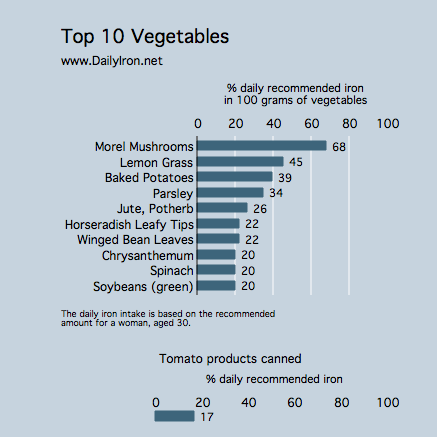Tomato paste contains 2.9 milligrams of iron per 100 grams. Grams is a measure of weight. To put 100 grams in perspective, consider alternative measures for this food:
- 1 cup equals 262 grams.
- 1 tbsp equals 16 grams.
In the category of vegetables, we included whole vegetable products in the Top 10 list. We excluded dried/dehydrated products from the Top 10. You will find some dehydrated vegetables high in iron per 100 grabut they tend to be far more volume than anyone would consume. Furthermore, foods may be fortified with iron but are not included in this Top 10 list. The food tested for the particular graph below can be described more specifically as:
Tomato products, canned, paste, without salt added
Read more about iron in vegetables or visit our iron-rich foods list.

Vegetables in the main are not an excellent iron source. Those vegetables that do have a lot of iron also are likely to be packed with iron inhibitors, making it difficult to absorb much of the iron from the vegetables.
Nonetheless, even a vegetable with minimal iron may play an important role in your iron metabolism. Vegetables can often be abundant in vitamin C, a vitamin that can actually help you utilize the iron more completely in your plant-based food items; tomato paste is a fair source of vitamin C.
As an example, you can combine bell peppers and vine ripened tomatoes with a grain-based entree or with legumes to help you absorb more of the iron in your meal as a whole. A raw pineapple treat with a meal would help as well because of the fruit’s content of vitamin C. A glass of fruit juice is one more an outstanding approach.